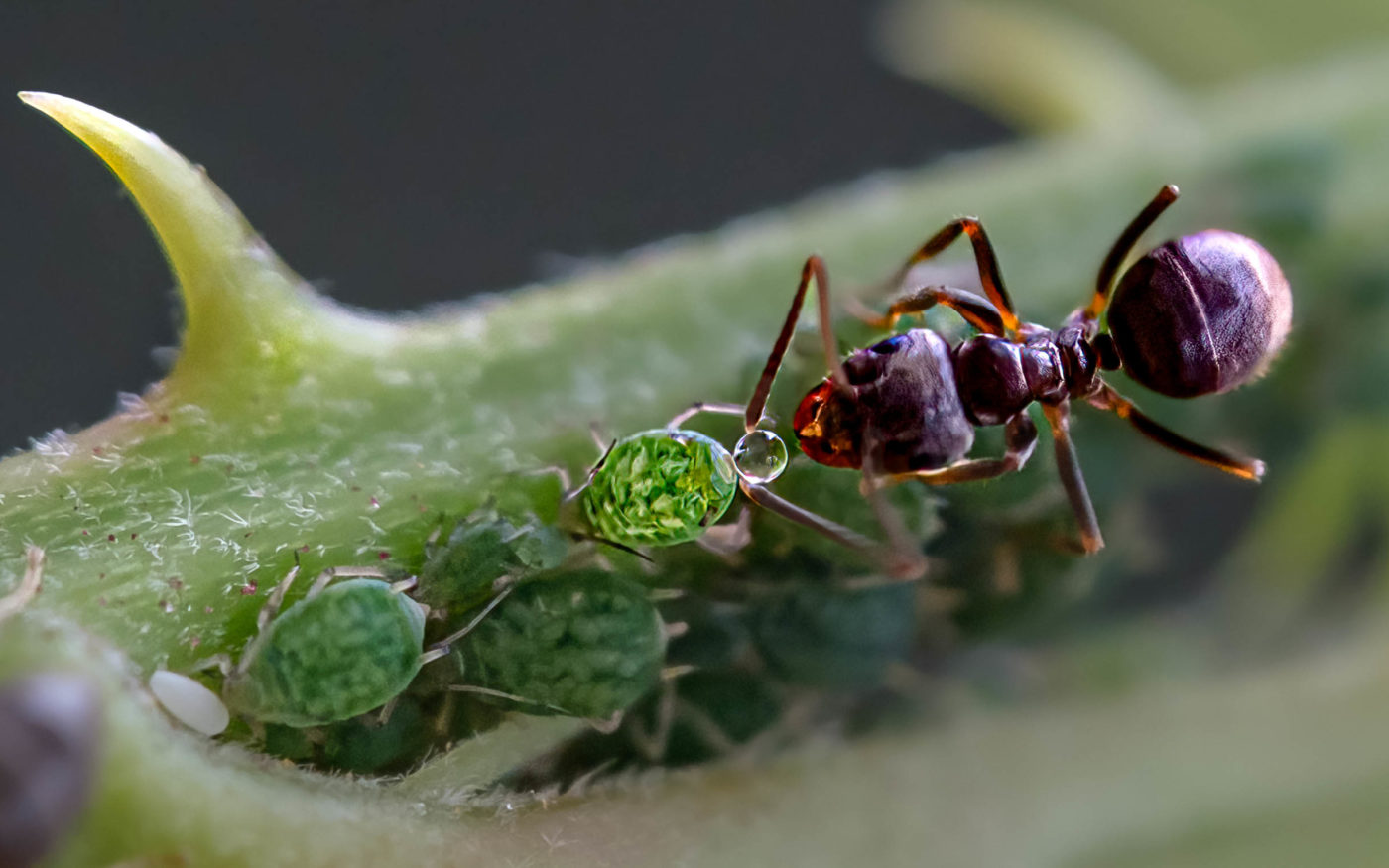Order
Ants, bees, wasps and sawflies
All adult Hymenoptera have a very narrow waist in the middle of their body, and this is clearly seen in the wingless worker caste of ants.
Ants live in large colonies and are well-known insects in Britain’s countryside and gardens. There are over three dozen species of ants in the UK but one of the commonest and most often seen is the Black Garden Ant (Lasius niger), although related and very similar species of black ant are also found.
What do they look like?
The Black Garden Ant workers are 4-6 mm long, wingless and black or dark brown. They are usually found in large numbers, either around their nests in the soil or following each other along their scent trails across the ground and paved areas, over walls and into buildings. The queen is larger (up to 15 mm long) and mid-brown in colour but is only seen if the nest is excavated. The fertile males and females are only seen briefly, as swarms of flying ants.
Where do they live?
Black Garden Ants nest mainly in dry soil and humus. Although their nests are most often noticed in gardens – in flower beds, lawns, and under paving stones – they are also common in dry grasslands and heaths. From their nests, they forage widely for food along scent-marked trails across soil and ground vegetation, and – most noticeably – across paved surfaces and into houses, where they are attracted to sugar and crumbs.
Outside human habitation, they feed on many things: small live insects, dead insects, nectar, seeds, etc. They also feed on the sugary secretions produced by aphids, some other sap-feeding insects and certain caterpillars, and often tend them to protect the source of this food from predators.
Where can they be found?
This ant is found throughout the British Isles.
When can you see them?
Worker ants can be seen foraging on the ground and in houses from March to October.
The winged adults fly on certain afternoons from July to September. This is triggered by warm humid weather conditions and often occurs simultaneously over wide areas of the country.
Life cycle
The fertile flying ants mate during their two or three hour flight, but many of them are eaten by birds. After the mating flight, the males die but the surviving mated females shed their wings and make individual chambers in suitable nest sites in the soil.
The new queen lays a few eggs and rears the larvae to adults: these adults are her first workers and the successive broods of workers that start to emerge in the early spring will tend the queen, rear the larvae, protect the pupal cocoons (the familiar cream-coloured so-called ‘ants eggs’), and forage for food for the queen and colony for the remainder of the queen’s life (up to 15 years).
During early summer, the queen lays special eggs that will develop not into the usual sterile workers but into fertile winged males and females. Later in the summer, these fertile adults undertake the mating flight and the successful females will establish new colonies.
What do they do?
This species and a related Lasius species are essential for the conservation of the declining populations of the attractive Silver-Studded Blue Butterfly (Plebejus argus) on heathland because they protect the butterfly’s caterpillars from predators in return for feeding on secretions specially produced by the caterpillars.
Although black ants are a nuisance in houses and can cause problems for gardeners by loosening the soil under plants, they are harmless and do not carry diseases.
Did you know?
All the worker ants of a particular colony have developed as sterile females from eggs laid by the colony’s single queen, so they are all sisters!

